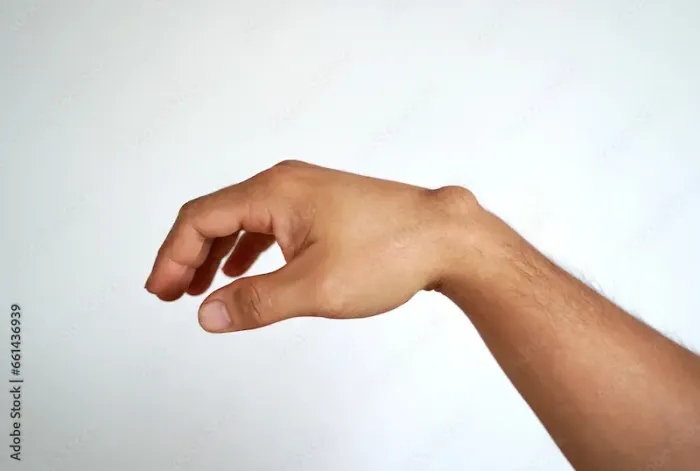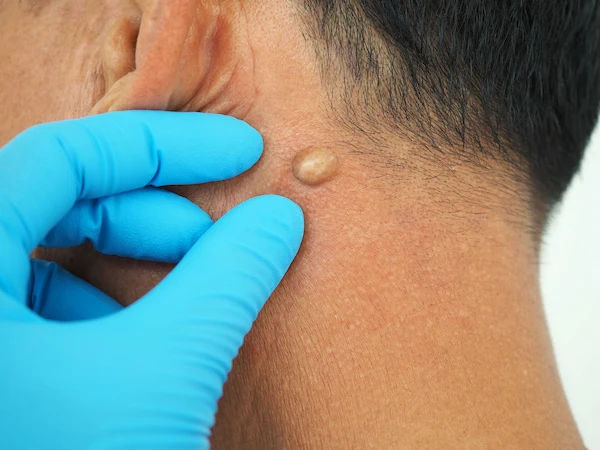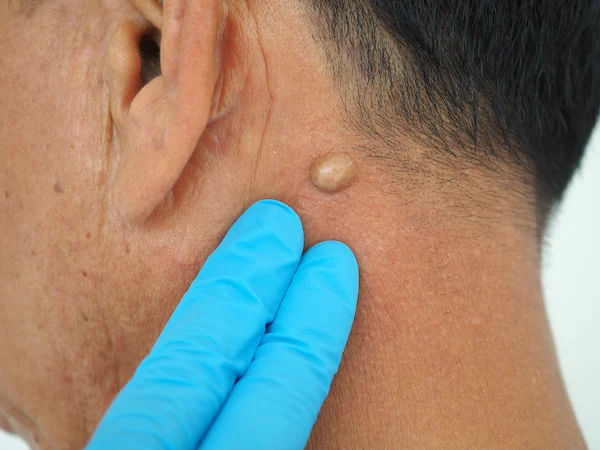Top Home Remedies for Lipoma and Fat Lumps
Learn the facts on lipoma natural treatment and safe home care for fatty lumps. What works, what doesn’t, and when to see a doctor—evidence-based tips.

Written by Dr. Siri Nallapu
Reviewed by Dr. Shaik Abdul Kalam MD (Physician)
Last updated on 15th Nov, 2025

Introduction: Why this topic matters
Finding a soft, rubbery bump under your skin can feel unsettling. In many cases, these “fatty lumps” turn out to be lipomas—common, benign (non-cancerous) growths composed of fat cells. People often search for lipoma natural treatment because they want to avoid procedures, medications, or scarring. The reassuring news is that lipomas are usually harmless, slow-growing, and do not turn into cancer. However, it is important to know that no proven home remedy reliably shrinks or removes a lipoma.
This guide explains what you can safely do at home, what to avoid, your medical treatment options, how to monitor a lump correctly, and when to see a clinician.
What is a lipoma?
It can be explained as:
• A lipoma is a slow-growing lump of fat that sits just under the skin.
• It feels soft, rubbery, and moves easily when pressed.
• Lipomas commonly appear on the shoulders, back, arms, thighs, abdomen, and neck.
• Most measure 1–3 cm across, but larger ones can occur.
• Lipomas are benign. They do not turn into cancer.
A different and much rarer condition, called liposarcoma, is cancerous. Liposarcoma tends to feel firm, fixed to deeper tissues, and may grow more rapidly. Any lump that behaves differently from a typical lipoma should be evaluated by a clinician.Consult a Top General Practitioner for Personalised Advice
Are there proven home remedies for lipomas?
Short answer: No.
There is currently no strong scientific evidence that supplements, diets, creams, essential oils, or herbal pastes can shrink or dissolve lipomas. Reputable clinical guidance shows that the only treatments with proven results are medical procedures:
• Surgical removal (excision)
• Liposuction (fat removal through a small incision)
• Steroid injections (may shrink a lipoma but usually do not remove it completely)
Common natural claims online include turmeric, apple cider vinegar, castor oil, frankincense oil, and special “fat-melting diets.” These have not been shown in high-quality clinical trials to eliminate lipomas. Some herbal remedies may even irritate the skin or interact with medications.
If you wish to try supplements or topical oils, always discuss them with your clinician or pharmacist first.
Lipoma natural treatment: What you can safely do at home
While home care does not eliminate fatty lumps, it can reduce discomfort, protect the skin, and help you monitor changes.
1) Reduce irritation and pressure
• Wear soft, loose, non-restrictive clothing to avoid rubbing against the lipoma.
• If clothing, bra straps, or belts rub against the lump, place a soft foam or gel pad over the area.
• Avoid repetitive pressure from items such as tight waistbands, backpack straps, sports equipment, or tool belts.
Keeping pressure off the area prevents tenderness and reduces skin irritation.
2) Manage mild discomfort
• If the area becomes sore after being bumped or compressed, ask your clinician whether you can use occasional over-the-counter pain relief such as paracetamol or (if appropriate) ibuprofen.
• Keep the overlying skin clean and moisturised to reduce friction.
• A warm compress can help relax the surrounding tissue and improve comfort. It will not shrink the lipoma, but it may soothe the area.
Avoid NSAIDs (like ibuprofen) if you have kidney disease, a history of ulcers, bleeding risks, or you take blood thinners—unless your clinician approves.
3) Track changes
Monitoring helps you catch unusual symptoms early.
• Measure the lump every few months using a ruler or tape measure.
• Record symptoms: pain, firmness, rapid growth, tenderness, or changes in skin colour.
• Take photos with a date stamp so you can compare sizes over time.
Monitoring is especially useful if you plan to discuss removal later.
4) Support general health
While these habits do not dissolve lipomas, they support healthy skin and tissue function:
• Maintain a healthy, stable weight and stay physically active. Lipomas occur in people of all body types, and weight loss does not “melt” them, but a healthier metabolism supports overall well-being.
• Eat a balanced diet with plenty of whole foods—fruits, vegetables, whole grains, lean protein, and healthy fats.
• Avoid smoking and limit alcohol; both can affect skin health, and wound healing should you choose surgical removal later.
What to avoid with fatty lumps?
Avoid the following things:
• Do not try to pop, squeeze, cut, or lance the lump yourself. This can lead to infection, scarring, and bleeding and will not remove the lipoma.
• Be cautious with online “miracle cures.” Remedies like turmeric paste, apple cider vinegar, castor oil, and essential oils have no proven effect.
• Avoid high-dose supplements without medical oversight. Natural does not always mean safe.
• Do not apply harsh chemicals or acids—some online suggestions can burn or damage the skin.
When to see a doctor about a fatty lump?
Seek medical advice if:
• The lump is new, and you are unsure what it is.
• It grows rapidly or becomes larger than about 5 cm (2 inches).
• It becomes painful, firm, deep, or stops moving under the skin.
• There are skin changes such as redness, warmth, ulceration, or fluid drainage.
• You develop numbness, tingling, or weakness in the area.
• Several new lumps appear over a short period.
• You experience unexplained weight loss, fevers, or night sweats.
A clinician may simply confirm that the lipoma is benign and suggest monitoring, or discuss removal if it is painful or bothersome.
How are lipomas diagnosed?
The diagnosis of lipomas includes:
• Most lipomas are diagnosed through a physical examination—their texture and mobility make them fairly recognisable.
• If the diagnosis is uncertain, an ultrasound or MRI may be recommended to examine the tissue depth and structure.
• In rare cases, a biopsy may be taken to rule out other conditions.
Diagnosis is usually straightforward and painless.
Medical treatments that work (and how they compare)
If your lipoma causes pain, affects movement, or bothers you cosmetically, these are evidence-based treatment options:
• Surgical removal (excision)
o Removes both the lipoma and its capsule.
o Highest success rate; lowest likelihood of recurrence.
o Minor scarring is possible depending on size and location.
• Liposuction
o Removes fatty tissue through a small incision using suction.
o Smaller scar but may leave behind the capsule, increasing the chance of the lipoma returning.
• Steroid injections
o Can shrink smaller lipomas, but usually do not remove them completely.
o It may be an option if surgery is not preferred.
Your clinician will consider your goals, the location and size of the lump, and the cosmetic outcome you want.
A practical at-home plan for lipoma care
A practical at-home plan includes:
• Confirm the diagnosis. If a clinician has not examined the lump, book an appointment.
• Observe and document. Measure and photograph the lipoma every 3–6 months or sooner if changes occur.
• Adjust clothing and pressure. Aim for comfort and avoid rubbing or irritation.
• Manage symptoms comfortably. Use gentle skin care and appropriate pain relief if needed.
• Discuss options. If the lump grows, becomes uncomfortable, or affects self-confidence, removal is a reasonable choice.
Lipoma natural treatment vs evidence-based care — the bottom line
It makes sense to look for natural remedies. Many people prefer to avoid procedures if possible. However, current medical evidence shows:
• Home remedies may soothe the skin, but do not shrink or remove lipomas.
• The only reliable way to remove a lipoma is through medical treatment.
• Safe monitoring and gentle care are the best at-home strategies.
Conclusion
Lipomas are common, typically harmless, and do not turn into cancer. While there is no proven lipoma natural treatment that shrinks or dissolves fatty lumps, there are practical steps you can take at home to stay comfortable and monitor changes. Protecting the skin, avoiding irritation, and keeping track of size are useful strategies. If you want the lipoma removed—or if symptoms change—medical removal options such as excision or liposuction are effective and reliable. The most important step is confidence in the diagnosis and knowing when to seek a clinician’s guidance.Consult a Top General Practitioner for Personalised Advice
Consult a Top General Practitioner for Personalised Advice

Dr. Mainak Baksi
General Practitioner
13 Years • MBBS , MD (MPH)
Howrah
Mainak Baksi Clinic, Howrah
(50+ Patients)

Dr. Tanmaya Kumar Sahu
General Physician/ Internal Medicine Specialist
12 Years • MBBS, MD ( Internal Medicine )
Bhubaneswar
Apollo Hospitals Old Sainik School Road, Bhubaneswar

Dr. Swati Hanmanthappa
General Physician/ Internal Medicine Specialist
2 Years • MBBS
Bengaluru
Apollo Clinic, Electronic City, Bengaluru

Dr. Sougata Kumar
General Practitioner
8 Years • MBBS
East Midnapore
VIVEKANANDA SEBA SADAN, East Midnapore

Dr. Debdatta Pati
Psychiatrist
18 Years • MBBS, DPM, MD (PSYCHIATRY)
Kolkata
MCR SUPER SPECIALITY POLY CLINIC & PATHOLOGY, Kolkata
Consult a Top General Practitioner for Personalised Advice

Dr. Mainak Baksi
General Practitioner
13 Years • MBBS , MD (MPH)
Howrah
Mainak Baksi Clinic, Howrah
(50+ Patients)

Dr. Tanmaya Kumar Sahu
General Physician/ Internal Medicine Specialist
12 Years • MBBS, MD ( Internal Medicine )
Bhubaneswar
Apollo Hospitals Old Sainik School Road, Bhubaneswar

Dr. Swati Hanmanthappa
General Physician/ Internal Medicine Specialist
2 Years • MBBS
Bengaluru
Apollo Clinic, Electronic City, Bengaluru

Dr. Sougata Kumar
General Practitioner
8 Years • MBBS
East Midnapore
VIVEKANANDA SEBA SADAN, East Midnapore

Dr. Debdatta Pati
Psychiatrist
18 Years • MBBS, DPM, MD (PSYCHIATRY)
Kolkata
MCR SUPER SPECIALITY POLY CLINIC & PATHOLOGY, Kolkata
More articles from Lipoma
Frequently Asked Questions
Q.Are lipomas dangerous?
Lipomas are benign and usually harmless. Seek medical advice if the lump is new, growing rapidly, deep, painful, or behaving differently.
Q.Can a lipoma turn into cancer?
No. Lipomas do not become cancerous. Liposarcoma is a different, rare tumour that should be evaluated if red flags appear.
Q.Will diet or exercise shrink lipomas?
No studies show that diet or exercise shrinks existing lipomas. However, healthy habits benefit overall health.
Q.Do home remedies like apple cider vinegar or turmeric work?
No reliable evidence supports these treatments. Some can irritate skin or interact with medications.
Q.When should a lipoma be removed?
Consider removal if the lump is painful, growing, affecting movement, rubbing against clothing, or if the diagnosis is uncertain.

